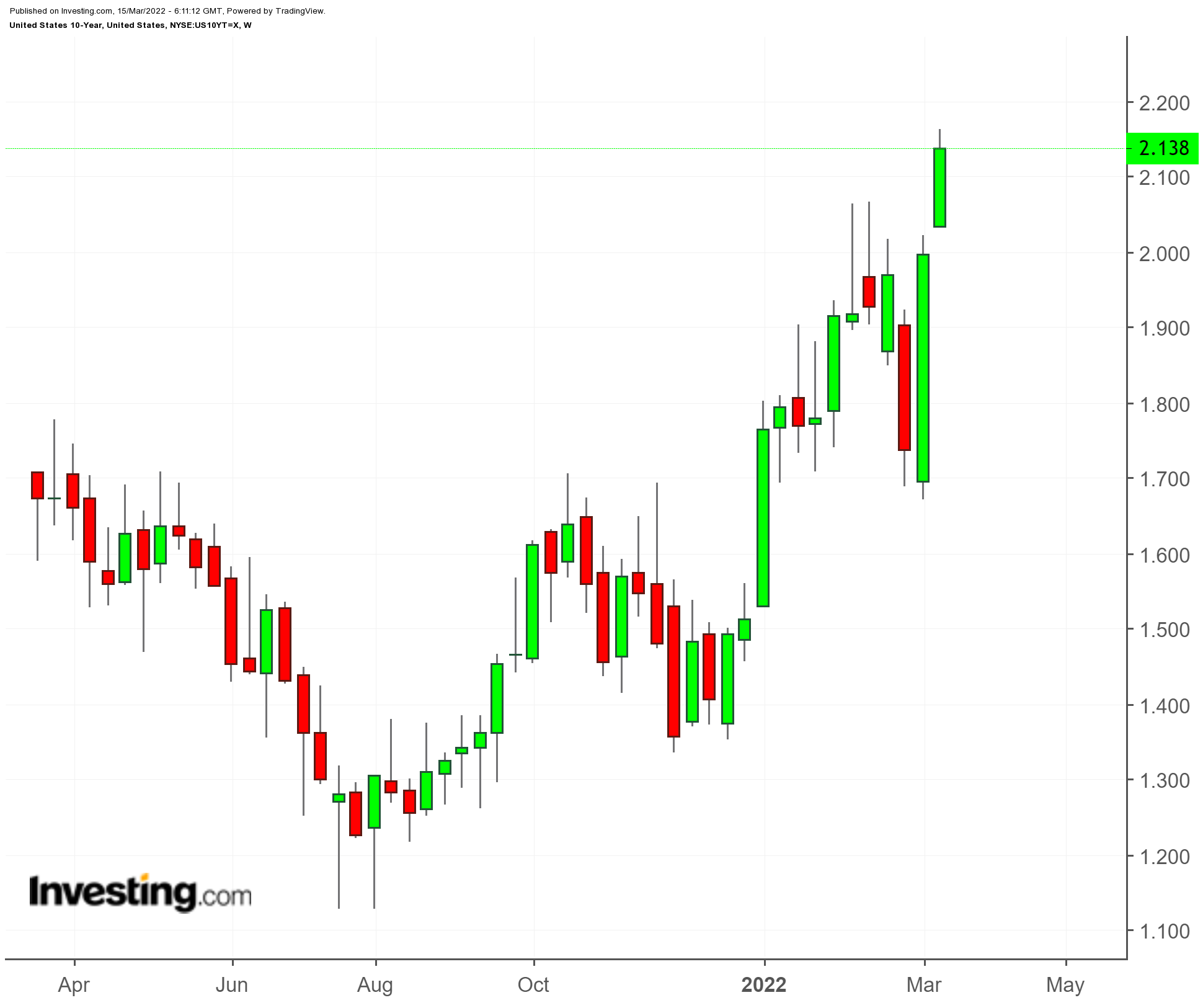Investors felt optimistic enough on Monday about a resolution of the Ukraine conflict that they dumped US Treasuries as concerns about inflation and the Federal Reserve’s impending cycle of interest rate hikes drove yields upwards.
However, at the time of publication on Tuesday, negotiations hadn't progressed and the Russian offensive appeared to have intensified. As a result, yields are currently slipping.

Still, on Monday, the yield on the benchmark 10-year Treasury note shot past the 2.044% high of the year and topped 2.14%. Since late February, the outbreak of the war in Ukraine had sent investors fleeing into safety and drove the 10-year yield down to nearly 1.72%.
The first successful evacuations from Ukraine via humanitarian corridors were able to take place on Monday. On Tuesday, Russia continued to pound Ukrainian cities, and civilian fatalities continue to mount.
Still, the Fed seems determined to proceed with its first interest rate hike since 2018. Fed Chairman Jerome Powell has pegged the initial increase this week for a quarter point, but markets are now pricing in a high probability of seven such hikes this year, for a total of 1.75%.
On Wednesday, the Fed will also release projections of future inflation and growth by the policymakers in the Federal Open Market Committee, which should provide some clues on future rate hikes.
The US consumer price index for February, released last week, bounded ahead to 7.9%. It is likely to go even higher as the Ukraine war and Western sanctions drive up the prices of commodities. Economists may debate the durability of the current inflation, but no one doubts that prices will continue to rise in the near future, with forecasts for CPI in the 8-9% range.
Aside from the Ukraine war, a new round of lockdowns in China, as it pursues its zero-COVID policy, will prolong supply chain disruptions. This could exacerbate inflation as well as the slowing global economic growth.
The good news is the rise in longer term yields has forestalled a yield curve inversion—where short-term bond yields exceed long-term—even though the two-year Treasury note yield has risen above 1.86% to reflect the impending Fed action on short-term rates. An inversion is usually seen as a harbinger of recession.
European Sovereign Bonds Follow Treasury Lead
European sovereign bond markets are following a similar trajectory in rising yields after the European Central Bank last week surprised investors by accelerating its reduction in bond purchases, tapering them to €20m (US$21.9m) a month by June, instead of reaching that level in October, as originally planned.

Yield on Germany’s 10-year bond, a benchmark for the eurozone as a whole, rose 11 basis points on Monday, hitting 0.35%. Like Treasuries today, yields on eurozone bonds have been slipping on Tuesday. Yield on the German Bund dipped back into negative territory on the outbreak of hostilities in Ukraine, though it's currently still trading within a positive range.
The forthright response of Germany’s new chancellor, Olaf Scholz, to announce a significant boost in military spending was translated into action when Defense Minister Christine Lambrecht said on Monday that Berlin will buy 35 F-35 fighter jets and an additional 15 Eurofighter planes equipped for electronic warfare.
The European situation is more complex than that in the US. Skyrocketing energy prices due to the interruption of Russian supplies will have a much greater impact on Europe’s inflation, but monetary policy can’t do much about that. The secondary effect of driving wages higher is not much in evidence so far.
In announcing a quicker tapering of bond purchases, the ECB originally said it will not necessarily proceed to interest rate hikes once the new bond purchases cease. Rather, policymakers had been emphasizing a measured approach.
